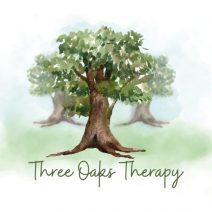As therapists, we constantly seek to understand the intricate workings of human experience, from emotional regulation to relational dynamics. While traditional approaches have focused on cognitive and behavioural patterns, Polyvagal Theory, developed by Dr. Stephen Porges, offers a powerful neurophysiological lens through which to view our clients' responses and guide our interventions. Being "polyvagal informed" is more than just theoretical knowledge; it's a foundational understanding that profoundly shapes our clinical practice, enabling us to foster deeper healing and connection.
What is Polyvagal Theory?
At its core, Polyvagal Theory illuminates the profound influence of the vagus nerve – the longest nerve in the body – on the autonomic nervous system. Moving beyond the simplistic "fight or flight" model, it delineates three distinct nervous system states, each dictating our clients' capacity for connection, regulation, and engagement:
- Ventral Vagal (Social Engagement System): This is the optimal state for therapeutic work. When a client's ventral vagal complex is active, they feel safe, connected, and present. They are able to engage in reciprocal social interaction, access higher cognitive functions, co-regulate, and process material effectively. This is the state where genuine insight, healing, and relational repair can occur.
- Sympathetic (Mobilisation/Fight or Flight): When perceived threat activates the sympathetic nervous system, clients may present with restlessness, anxiety, anger, or hypervigilance. Their physiological resources are mobilised for action – to resist or escape. Recognising this state helps us understand reactivity, pacing, and the need for co-regulation strategies to bring them back towards a sense of safety.
- Dorsal Vagal (Immobilisation/Freeze/Collapse): If sympathetic activation is overwhelmed or the perceived threat is inescapable, the evolutionarily oldest part of the vagus nerve, the dorsal vagal complex, can lead to shutdown. Clinically, this may manifest as dissociation, numbness, hopelessness, chronic fatigue, or a sense of being "stuck." Understanding this protective mechanism is crucial for working with trauma and avoiding re-traumatisation.
Why Being Polyvagal Informed Matters in Therapy
For us as therapists, understanding these nervous system states is paramount. It shifts our focus from merely addressing symptoms to actively tracking and responding to a client's physiological state, thereby creating a more attuned and effective therapeutic environment. This knowledge transforms how we:
- Understand Client States: It allows us to accurately identify whether a client is in a state of safe engagement, hyper-arousal, or hypo-arousal, providing a roadmap for intervention.
- Build Therapeutic Rapport: By consciously fostering a sense of safety (ventral vagal state) in the therapy room through our presence, prosody, and pacing, we create the optimal neurophysiological environment for trust and connection.
- Inform Interventions: It guides us in selecting and applying techniques that directly regulate the client's nervous system, particularly for those presenting with anxiety, trauma, or dissociation. Our interventions become more targeted and effective when aligned with the client's current state.
- Enhance Therapist Self-Regulation: This framework also equips us to better understand and manage our own physiological responses to challenging client material, preventing burnout and enhancing our capacity for compassionate presence.
Polyvagal Theory offers a sophisticated yet practical framework for understanding human behaviour and fostering resilience. By integrating this understanding into our therapeutic lens, we gain a profound ability to support our clients in cultivating greater safety, connection, and wellbeing.
